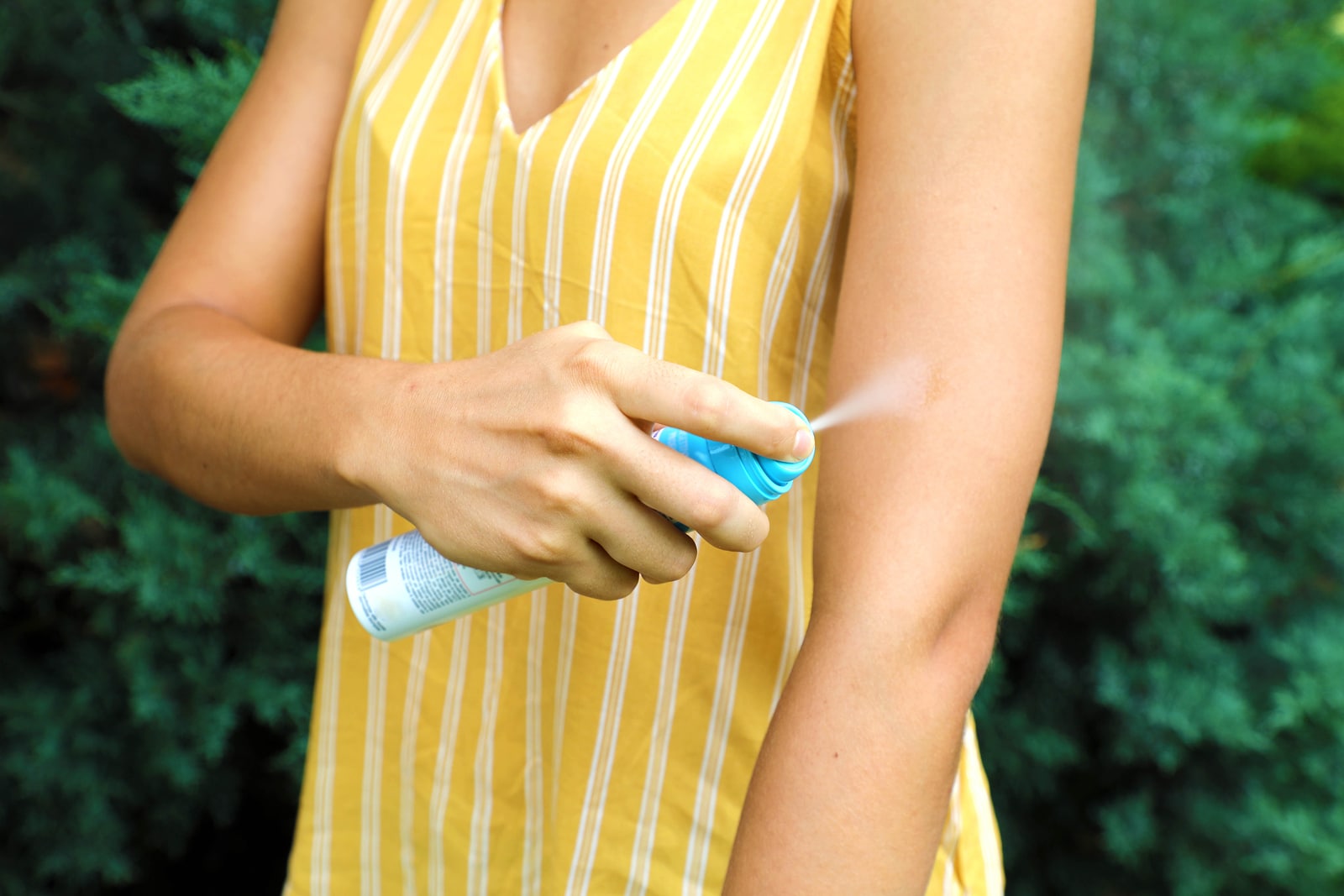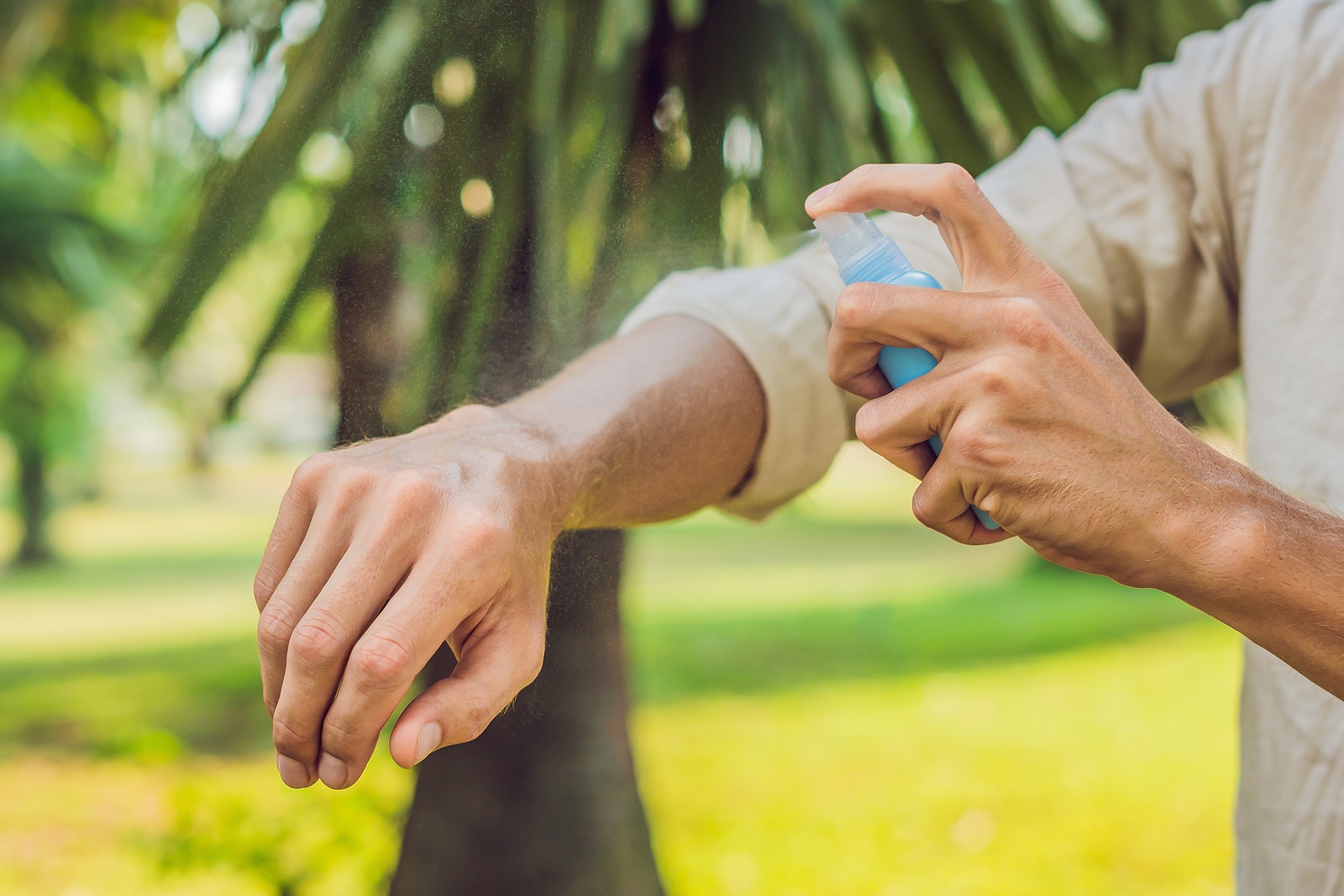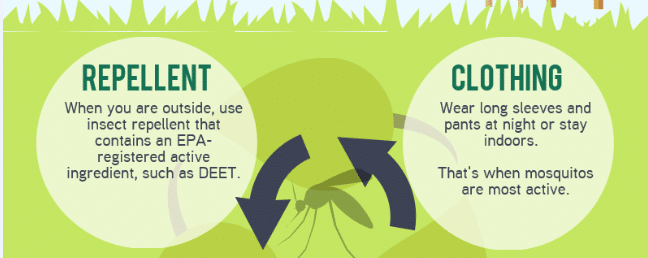Insect repellents play a crucial role in protecting individuals from the nuisance and potential harm caused by insect bites. Understanding the various types of insect repellents and their effectiveness is essential for making informed choices. This article provides an overview of the best insect repellents available, along with practical tips for their use and safety considerations.
Understanding the Importance of Insect Repellents
Insect repellents play a pivotal role in safeguarding individuals from the nuisance and potential health risks associated with insect bites. Whether spending time outdoors or in environments where insects are prevalent, the use of insect repellents is essential for mitigating the threat of insect-borne diseases and discomfort caused by bites.
Common Insects and Their Threats Mosquitoes, ticks, biting flies, and other insects are not only bothersome but also pose significant health risks. Mosquitoes, for example, are known vectors for diseases such as malaria, dengue fever, Zika virus, and West Nile virus. Ticks can transmit Lyme disease and other tick-borne illnesses, while biting flies can cause painful bites and potential allergic reactions. Understanding the threats posed by these insects underscores the importance of protection through the use of insect repellents.
The Role of Insect Repellents Insect repellents are formulated to deter insects from landing on the skin or clothing, thereby reducing the likelihood of bites. By creating a barrier that makes it difficult for insects to detect and target humans as their hosts, repellents serve as a crucial line of defense against insect-borne diseases. This proactive approach not only minimizes the risk of disease transmission but also alleviates the discomfort and irritation caused by insect bites.
In addition to personal protection, the use of insect repellents contributes to public health efforts by reducing the incidence of insect-borne diseases. By preventing bites, individuals can lower their risk of contracting diseases and subsequently reduce the burden on healthcare systems.
Furthermore, insect repellents are particularly important for vulnerable populations such as children, pregnant women, and individuals with compromised immune systems. Protecting these individuals from insect bites is paramount in safeguarding their well-being and minimizing potential health complications.
Insect repellents also play a significant role in enabling outdoor activities and adventures. Whether hiking, camping, gardening, or simply enjoying time in the backyard, the use of repellents allows individuals to engage in outdoor pursuits without the constant distraction and discomfort of insect bites.
Types of Insect Repellents
In the realm of insect repellents, various formulations and active ingredients offer diverse options for protecting against insect bites. Understanding the different types of insect repellents empowers individuals to make informed choices based on their specific needs and preferences.
DEET-based Repellents DEET (N,N-diethyl-meta-toluamide)
One of the most widely recognized and effective active ingredients in insect repellents. It provides long-lasting protection against a broad spectrum of insects, including mosquitoes, ticks, biting flies, and gnats. DEET-based repellents are recommended for use in areas with high insect activity and are particularly valuable in regions where insect-borne diseases are prevalent. These repellents offer a dependable defense against insect bites, making them a popular choice for outdoor activities and travel to tropical or heavily wooded areas.
Picaridin-based Repellents Picaridin, also known as KBR 3023
A synthetic compound that has gained popularity as an alternative to DEET. It offers effective protection against mosquitoes, ticks, and other biting insects without the strong odor or greasy feel often associated with DEET-based products. Picaridin-based repellents are suitable for individuals with sensitive skin and provide a pleasant application experience, making them an attractive option for daily use and outdoor adventures.
Oil of Lemon Eucalyptus-based Repellents Derived from the lemon eucalyptus plant, oil of lemon eucalyptus (OLE)
A natural repellent that offers protection comparable to low concentrations of DEET. OLE-based repellents provide an alternative for individuals seeking a plant-based, DEET-free solution for repelling mosquitoes. They are particularly appealing to those who prefer natural products and are looking for effective protection against insect bites.
Permethrin-treated Clothing and Gear Permethrin
A synthetic insecticide that can be applied to clothing, footwear, and gear to provide long-lasting protection against insects. When applied correctly, permethrin-treated items offer effective defense against mosquitoes, ticks, and other biting pests. Unlike skin-applied repellents, permethrin remains active through multiple washes, making it an excellent choice for individuals spending extended periods outdoors or traveling to areas with high insect activity.
IR3535-based Repellents IR3535
An active ingredient that provides effective protection against a variety of insects, including mosquitoes, ticks, and biting flies. It is gentle on the skin and offers an alternative for individuals with sensitivities to other active ingredients commonly found in repellents. IR3535-based repellents are suitable for daily use and outdoor activities, providing reliable defense against insect bites.
Citronella-based Repellents Citronella
Derived from the leaves and stems of various species of Cymbopogon (lemongrass), is a popular natural ingredient used in repellents. Citronella-based products, often found in candle or oil form, offer a pleasant and natural way to repel mosquitoes and other flying insects in outdoor settings. These products create a relaxing ambiance while providing protection, making them a favored choice for outdoor gatherings and leisure activities.
Factors to Consider When Choosing Insect Repellents
When selecting an insect repellent, several key factors should be taken into account to ensure effective protection against insect bites while addressing individual preferences and considerations. Understanding these factors empowers individuals to make informed decisions and choose the most suitable repellent for their specific needs.
Effectiveness
One of the primary considerations when choosing an insect repellent is its effectiveness in repelling a broad spectrum of insects. Different repellents may offer varying degrees of protection against mosquitoes, ticks, biting flies, and other pests. Understanding the efficacy of a repellent in relation to the prevalent insect species in a particular area is crucial for maximizing protection.
Duration of Protection
The duration of protection provided by a repellent is an essential factor, especially for individuals engaging in outdoor activities for extended periods. Some repellents offer prolonged coverage, reducing the need for frequent reapplication, while others may require more frequent use to maintain continuous protection. Factors such as outdoor activity level, sweating, and water exposure can affect the duration of protection, making it important to choose a repellent that aligns with specific needs and usage patterns.
Skin Sensitivity
Individuals with sensitive skin or allergies may need to consider the potential for skin irritation when selecting an insect repellent. Understanding the potential side effects and skin reactions associated with different repellents is crucial for choosing a product that is gentle and non-irritating. Formulations that are hypoallergenic or designed for sensitive skin can provide effective protection without causing skin discomfort.
Application Method
The ease of application and personal preferences regarding application methods are important factors to consider when choosing an insect repellent. Repellents are available in various forms, including sprays, lotions, wipes, and clothing treatments. Individuals may have preferences for specific application methods based on convenience, comfort, and the need for precise application in certain areas of the body. Understanding and selecting the most suitable application method enhances the overall user experience and ensures consistent and effective coverage.
Consideration of Environmental Conditions
Environmental factors such as temperature, humidity, and exposure to water can influence the performance of insect repellents. In hot and humid conditions, repellents may need to be reapplied more frequently due to increased sweating and evaporation. Water exposure, whether from swimming or intense physical activity, can also diminish the effectiveness of some repellents, necessitating careful consideration of the environmental conditions in which the repellent will be used.
Compatibility with Other Products
When using additional products such as sunscreen or skincare formulations, it is important to consider the compatibility of insect repellents with these products. Understanding the recommended application sequence and potential interactions between different products ensures optimal protection without compromising the efficacy of either product. Proper coordination of repellents with other personal care products is essential for maintaining comprehensive protection against insect bites and sun exposure.
Top Recommendations for Insect Repellents
When it comes to selecting the best insect repellents, several products stand out for their effectiveness, ease of use, and suitability for various outdoor activities. These top recommendations offer reliable protection against a range of insects, making them valuable choices for individuals seeking to minimize the risk of insect bites while enjoying outdoor pursuits.
OFF! Deep Woods
OFF! Deep Woods is a DEET-based repellent that provides long-lasting protection against mosquitoes, ticks, biting flies, and gnats. Its potent formula makes it ideal for outdoor activities such as camping, hiking, and fishing in areas with high insect activity. The non-greasy and pleasant application experience enhances its appeal for individuals seeking robust protection during extended outdoor excursions.
Sawyer Products Premium Insect Repellent Formulated with picaridin
Sawyer Products Premium Insect Repellent offers effective protection without the strong odor or greasy feel often associated with DEET-based products. It provides reliable defense against mosquitoes and ticks, making it suitable for daily use and outdoor adventures. Its non-irritating formula and ease of application make it a popular choice for individuals with sensitive skin or those seeking a comfortable repellent experience.
Repel Plant-Based Lemon Eucalyptus Insect Repellent
For those preferring a natural alternative, Repel Plant-Based Lemon Eucalyptus Insect Repellent harnesses the power of oil of lemon eucalyptus to provide effective protection against mosquitoes. This plant-based repellent offers a DEET-free solution while delivering dependable defense in outdoor settings. Its pleasant scent and natural formulation make it an attractive choice for individuals seeking a botanical approach to insect protection.
Permethrin-treated Clothing and Gear
Treating clothing and gear with permethrin provides long-lasting protection against mosquitoes and ticks, making it an excellent choice for individuals spending extended periods outdoors. This option is particularly valuable for individuals engaged in activities such as hiking, hunting, and camping, where consistent and reliable protection is essential. Permethrin-treated gear offers convenience and peace of mind, as the protection remains active even after multiple washes.
Avon Skin-So-Soft Bug Guard Plus IR3535
Avon Skin-So-Soft Bug Guard Plus IR3535 is a gentle IR3535-based repellent that offers effective protection against mosquitoes, ticks, and biting flies. Its non-greasy and skin-friendly formulation makes it suitable for daily use and outdoor activities, providing reliable defense without causing skin irritation. This repellent is an appealing option for individuals with sensitivities to other active ingredients commonly found in repellents.
Cutter Citro Guard Candle
Citronella-based repellents in candle form offer a natural and pleasant way to repel mosquitoes and other flying insects in outdoor settings. The Cutter Citro Guard Candle creates a relaxing ambiance while providing protection, making it a favored choice for outdoor gatherings, picnics, and leisure activities. Its natural and non-invasive approach to insect protection enhances the outdoor experience without the need for direct skin application.
Tips for Using Insect Repellents Effectively
Proper application and use of insect repellents are essential for maximizing their effectiveness and ensuring comprehensive protection against insect bites. By following these tips, individuals can utilize repellents effectively to minimize the risk of insect-borne diseases and enjoy outdoor activities with peace of mind.
Reapplication
In situations where prolonged protection is required, it is advisable to reapply the repellent as directed to maintain continuous coverage. Factors such as outdoor activity level, sweating, and water exposure can diminish the effectiveness of repellents over time, necessitating periodic reapplication to ensure ongoing protection. Adhering to the recommended reapplication intervals optimizes the repellent’s ability to deter insects and minimizes the risk of bites.
Clothing Considerations
In addition to applying repellents directly to the skin, individuals can minimize exposed skin by wearing long sleeves, pants, and socks to reduce the need for excessive repellent application. Choosing light-colored clothing can also help deter certain insects, as they are less attracted to lighter colors. Additionally, treating clothing and gear with permethrin provides an extra layer of protection, particularly in heavily infested areas or during extended outdoor activities.
Avoid Overapplication
While insect repellents are essential for protection, it is important to avoid overusing them. Applying more repellent than necessary does not enhance protection and may lead to unnecessary exposure to active ingredients. Adhering to the recommended application guidelines helps minimize the risk of skin irritation and exposure to excessive repellent.
Consider Environmental Factors
Environmental conditions such as temperature, humidity, and exposure to water can influence the performance of insect repellents. In hot and humid conditions, where sweating is more likely, the effectiveness of repellents may diminish more rapidly, necessitating more frequent reapplication. Additionally, water exposure from swimming or intense physical activity can reduce the repellent’s efficacy, requiring careful consideration of environmental conditions when using repellents.
Proper Storage and Disposal
Properly storing and disposing of insect repellents is important for maintaining their effectiveness and minimizing environmental impact. Storing repellents in a cool, dry place away from direct sunlight helps preserve their potency. Additionally, following local guidelines for the disposal of empty repellent containers or expired products ensures responsible use and minimizes environmental impact.
Safety Precautions and Considerations
While insect repellents are valuable tools for protecting against insect bites and the potential diseases they may carry, it is important to observe safety precautions and considerations to ensure their effective and safe use.
Avoiding Overuse
While insect repellents are essential for protection, it is important to avoid overusing them. Applying more repellent than necessary does not enhance protection and may lead to unnecessary exposure to active ingredients. Adhering to the recommended application guidelines helps minimize the risk of skin irritation and exposure to excessive repellent. It is crucial to use repellents in moderation, following the instructions provided by the manufacturer to achieve optimal protection without overexposure to active ingredients.
Application on Children
When using repellents on children, it is essential to select products specifically formulated for their age group and follow the application guidelines to ensure their safety and effectiveness. Children’s skin is often more sensitive than adults, and using products designed for their age group helps minimize the risk of skin irritation or adverse reactions. Additionally, parents and caregivers should apply the repellent to their own hands before applying it to a child’s skin to ensure controlled and even coverage.
Compatibility with Sunscreen
When using both sunscreen and insect repellent simultaneously, it is important to apply the sunscreen first and allow it to absorb into the skin before applying the repellent. This ensures that both products provide optimal protection without interfering with each other’s effectiveness. Using sunscreen with insect repellent is particularly important when spending time outdoors, as it helps protect against both sun exposure and insect bites.
Avoiding Contact with Eyes and Mouth
When applying insect repellents, it is important to avoid contact with the eyes, mouth, and broken or irritated skin. In the event of accidental contact, individuals should rinse the affected area with water immediately. Additionally, individuals should wash their hands thoroughly after applying repellents to minimize the risk of inadvertent exposure to sensitive areas.
Consideration for Individuals with Sensitivities
For individuals with sensitivities to certain active ingredients commonly found in repellents, it is important to select products that are gentle and non-irritating. Understanding the potential side effects and skin reactions associated with different repellents is crucial for choosing a product that aligns with individual sensitivities and preferences. Hypoallergenic formulations and products designed for sensitive skin can provide effective protection without causing skin discomfort.
Proper Storage and Disposal
Properly storing and disposing of insect repellents is important for maintaining their effectiveness and minimizing environmental impact. Storing repellents in a cool, dry place away from direct sunlight helps preserve their potency. Additionally, following local guidelines for the disposal of empty repellent containers or expired products ensures responsible use and minimizes environmental impact.
Conclusion
Insect repellents play a pivotal role in safeguarding individuals from the nuisance and potential health risks associated with insect bites. Understanding the importance of insect repellents, the diverse types available, and the factors to consider when choosing a repellent empowers individuals to make informed decisions about their insect protection needs.
The significance of insect repellents extends beyond personal well-being, encompassing public health efforts and enabling outdoor activities. By creating a barrier that deters insects from landing on the skin or clothing, repellents minimize the risk of insect-borne diseases and alleviate the discomfort and irritation caused by bites. This proactive approach not only protects individuals but also contributes to reducing the incidence of insect-borne diseases, thereby lessening the burden on healthcare systems.
The diverse types of insect repellents available cater to individual needs and preferences, offering options ranging from traditional DEET-based formulations to natural alternatives and permethrin-treated gear. Understanding the efficacy, duration of protection, skin sensitivity, and application methods of different repellents allows individuals to select products that align with their specific needs, activities, and environmental conditions. By tailoring their insect protection, individuals can engage in outdoor pursuits with minimized concerns about insect bites and related health risks.
In conclusion, the proactive use of insect repellents is a valuable strategy for minimizing the risks associated with insect bites and enjoying outdoor activities with peace of mind. Whether seeking robust protection in heavily infested areas, a comfortable and non-greasy application experience, or a natural and botanical approach to insect defense, the range of available repellents offers diverse options to suit individual needs and preferences.
By prioritizing protection, understanding the diverse types of repellents, and considering essential factors when choosing a repellent, individuals can make informed decisions that align with their specific needs and activities. This comprehensive approach to insect protection enables individuals to enjoy outdoor activities and pursuits with confidence, knowing that they are effectively safeguarded against the nuisance and potential health risks posed by insect bites.
Frequently Asked Questions
How often should insect repellents be reapplied?
The frequency of reapplication depends on the specific repellent and factors such as outdoor activity level, sweating, and water exposure. Follow the manufacturer’s instructions for optimal protection.
Can insect repellents be used on children?
Yes, there are insect repellents specifically formulated for children. It is important to use products designed for their age group and follow the application guidelines to ensure safety and effectiveness.
Are natural insect repellents as effective as chemical ones?
Natural repellents, such as oil of lemon eucalyptus and citronella-based products, can provide effective protection. However, their duration and spectrum of coverage may vary compared to chemical repellents, so it’s important to consider individual needs and preferences.
What should be considered when using insect repellents with sunscreen?
When using both sunscreen and insect repellent, apply the sunscreen first and allow it to absorb into the skin before applying the repellent. This ensures that both products provide optimal protection without interfering with each other’s effectiveness.
Can insect repellents be used on clothing?
Yes, some repellents can be applied to clothing and gear, providing long-lasting protection even after multiple washes. This can be a convenient option for individuals spending extended periods outdoors.
How to select the Best insect repellent for me
Insect Repellent
Insect repellents applied to the skin are often what we think of when we want to avoid insect bites. These are the most broadly useful, since they stay with you regardless of your movements.
Other types of repellents that EPA registers include clip-on products that have a pad with the repellent and a fan or other mechanism that disperses the repellent near your body.

Best Insect Repellent
Insect repellent is very essential for outdoor activities.
Top Picks for Insect Repellent
- Best bug spray with DEET: OFF! Deep Woods Spray Pump
Best bug repellent with picaridin: Sawyer Premium Insect Repellent with 20% Picaridin
Best for clothing: Sawyer Premium Permethrin
Best natural bug spray: Repel with Lemon Eucalyptus Oil
Best DIY bug repellent ingredients: Oil of lemon eucalyptus,geranium, cedar wood, lavender, rosemary, grapefruit, citronella,garlic, thyme, eucalyptus, peppermint, lemongrass
Insect Repellent for Kids
Which is the best insect repellent for kids? Find out below.
Importance of Insect Repellent













